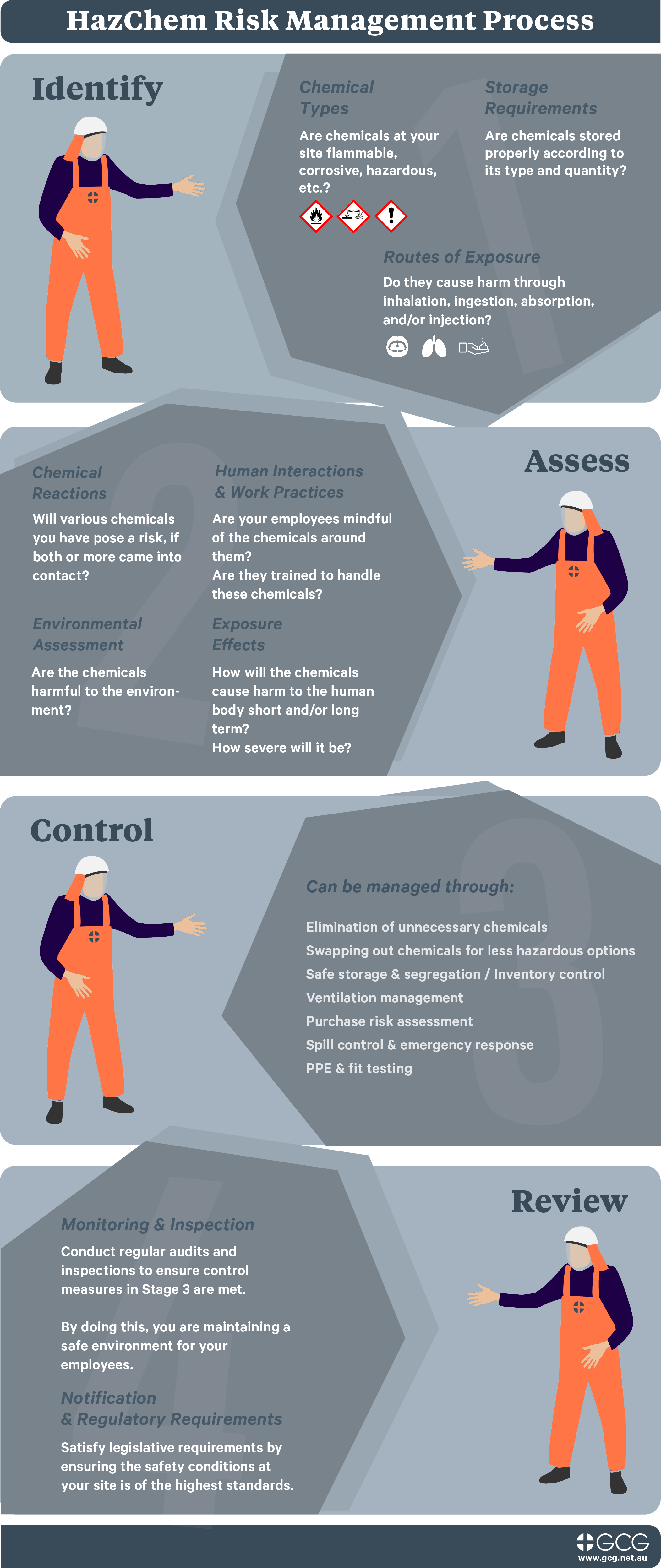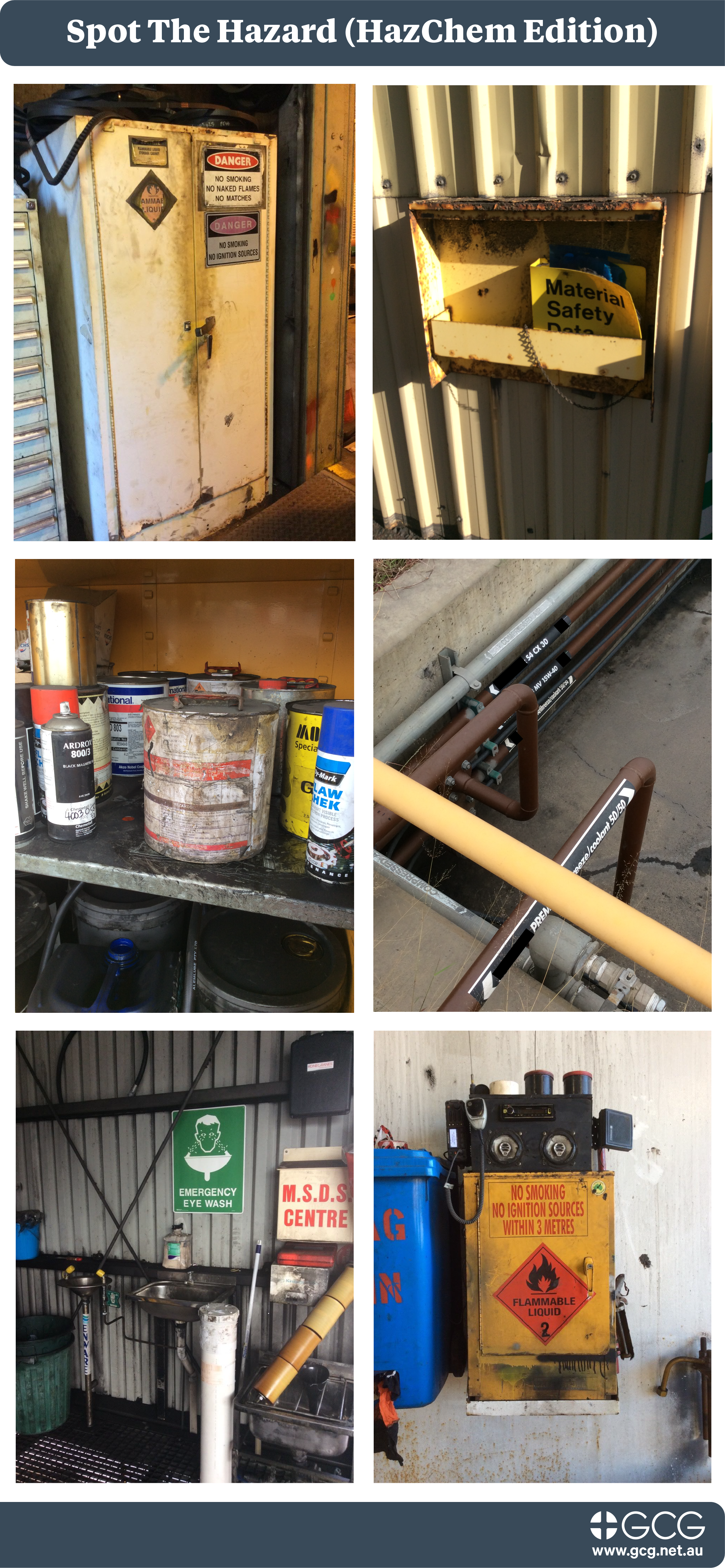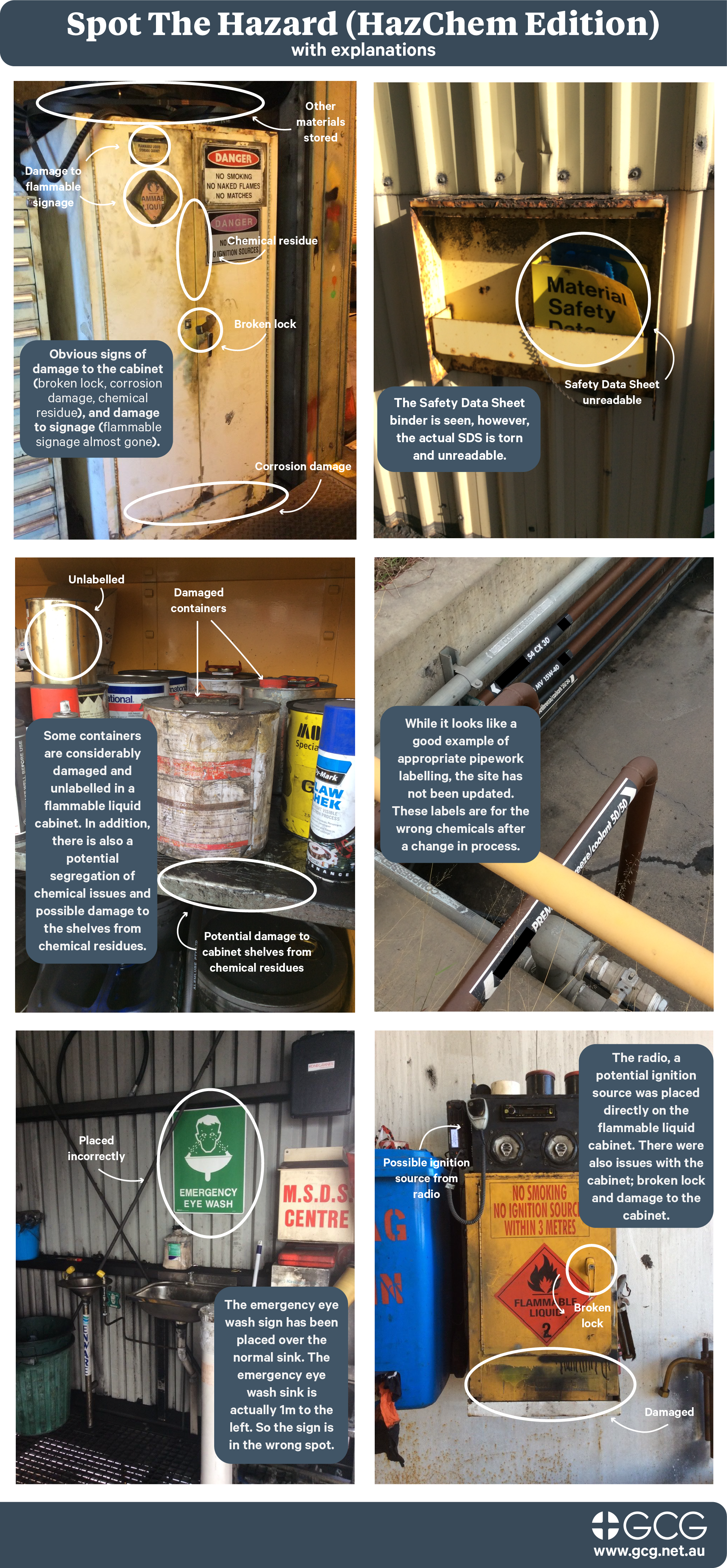Case Studies
Hunter Valley Operations:
Using Real-Time Monitoring to Control Dust Exposure
Managing Chemical Risk in a Large Organisation
Evaluating the Storage of Hazardous Chemicals in Australia
Hazardous Chemicals and Dangerous Goods – Simplifying the situation
Dual Focus – The Health Risk Assessment and Task Analysis Project
Asbestos Containing Materials in Fires
Insurance and Building Remediation
Multi-Building Removal and Demolition

 Hazardous Chemicals are dangerous to humans, property, and the environment, and are commonly used across many industries (and workplaces) in Australia. We work with clients to assure safety, education, and strict management practices are carried out and maintained when dealing with hazardous elements.
Hazardous Chemicals are dangerous to humans, property, and the environment, and are commonly used across many industries (and workplaces) in Australia. We work with clients to assure safety, education, and strict management practices are carried out and maintained when dealing with hazardous elements.







